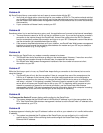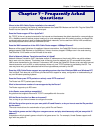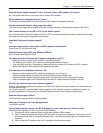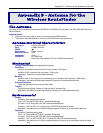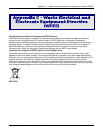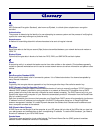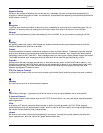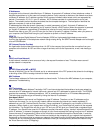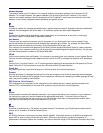
Glossary
Multi-Tech Systems, Inc. RouteFinder SOHO RF820/RF820-AP & RF830/RF830-AP User Guide (S000399E) 90
Static Routing
Involves the selection of a route for data traffic on the basis of routing options preset by the network administrator.
Subnet
A portion of a network that shares a common address component. On TCP/IP networks, subnets are all devices
whose IP Addresses have the same prefix. For example, all devices with IP addresses starting with 213.0.0 are part
of the same subnet.
Subnet Mask / IP Address Mask
Subnet mask is what is used to determine what subnet an IP address belongs to. Subnetting enables the network
administrator to further divide the host part of the address into two or more subnets.
T
TCP/IP (Transmission Control Protocol/Internet Protocol)
A suite of communication protocols used to connect hosts on the Internet. Every computer that wants to
communicate with another computer on the Internet must use the TCP/IP protocol to transmit and route data
packets. The format of an IP address is a 32-bit numeric address written as four octets separated by periods.
Each number can be zero to 255. Within an isolated network, you can assign IP addresses at random as long as
each one is unique. However, connecting a private network to the Internet requires using registered IP addresses
to avoid duplication.
The four groups of numbers (octets) are used to identify a particular network and host on that network. The
InterNIC assigns Internet addresses as Class A, Class B, or Class C. Class A supports 16 million hosts on each
of 127 networks. Class B supports 65,000 hosts on each of 16,000 networks. Class C supports 254 hosts on each
of 2 million networks. Due to the large increase in access to the Internet, new classless schemes are gradually
replacing the system based on classes.
TKIP
TKIP (Temporal Key Integrity Protocol) is a security protocol used in Wi-Fi Protected Access (WPA).
Triple DES (3DES)
Cipher that applies the DES cipher three times with either two or three different DES keys.
Tunneling
As an Internet term, tunneling means to provide a secure temporary path over the Internet or other IP-based
network in a VPN (Virtual Private Network) scenario. In this context, tunneling is the process of encapsulating an
encrypted data packet in an IP packet for secure transmission across an inherently insecure IP network, such as
the Internet.
U
UDP (User Datagram Protocol)
An Internet Standard transport layer protocol. It is a connectionless protocol that adds a level of reliability and
multiplexing to IP.
V
Virtual Private Network
A private network built atop a public network. Hosts within the private network use encryption to talk to other
hosts; the encryption excludes hosts from outside the private network even if they are on the public network.
W
WAN (Wide Area Network)
A network that connects host computers and sites across a wide geographical area.
WEP
WEP (Wired Equivalency Privacy) offers the privacy equivalent to that of a wired LAN. If activated, data is
encrypted before transmission, and then the receiving station, such as an access point or another radio, performs
decryption upon arrival of the data. 802.11 WEP encrypts data only between 802.11 stations.



